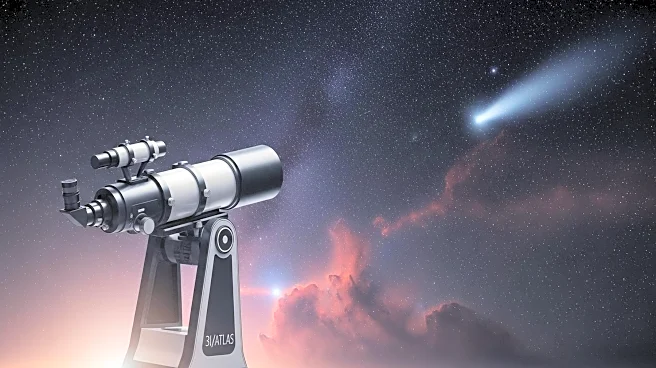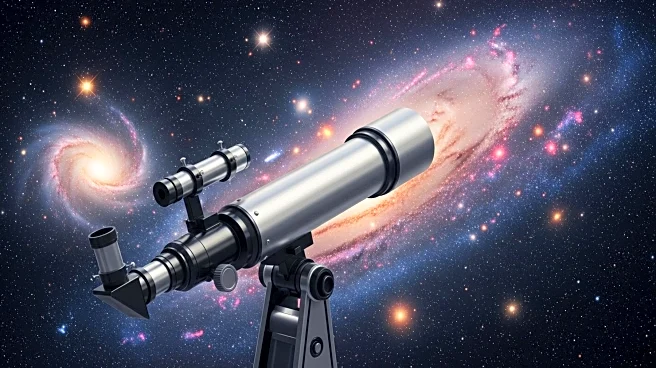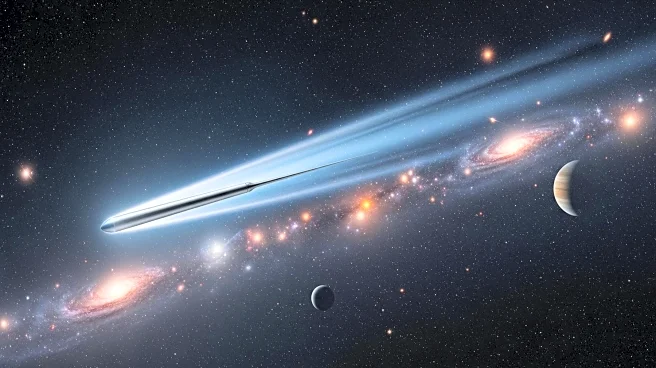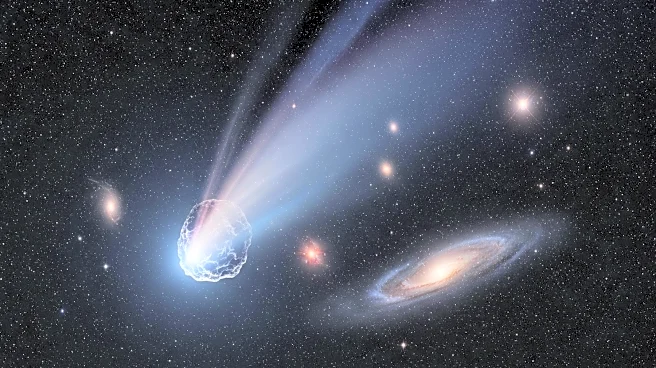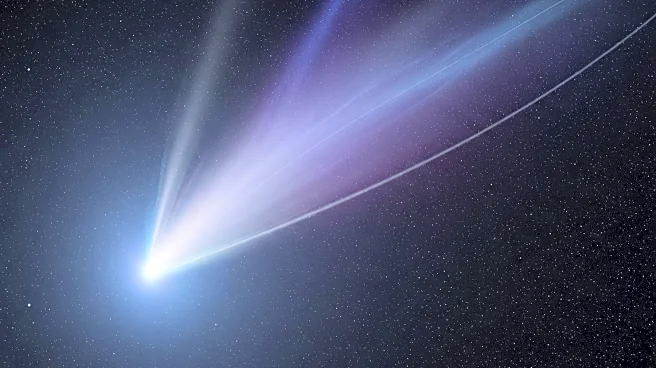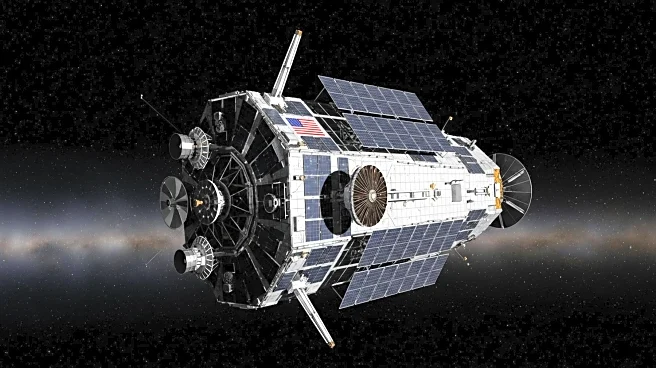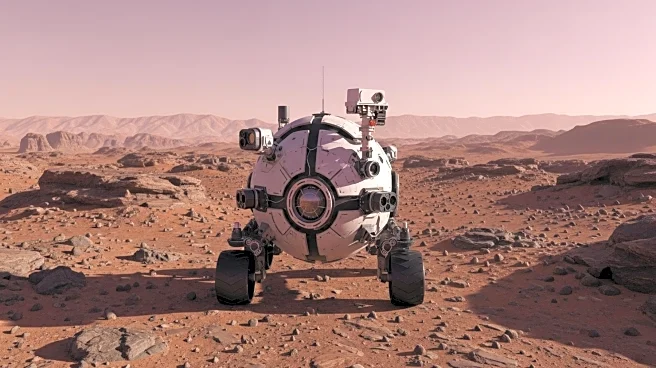What's Happening?
NASA has confirmed the discovery of a rare interstellar object, designated 3I/ATLAS, currently moving through the solar system. This object, identified by the Asteroid Terrestrial-impact Last Alert System (ATLAS), is only the third confirmed interstellar visitor, following 'Oumuamua and 2I/Borisov. Initially thought to be an asteroid, further analysis revealed comet-like features, including a coma and a short tail. The object is traveling at approximately 134,000 mph and is expected to make its closest approach to the Sun on October 30, passing inside the orbit of Mars. It will remain at a safe distance from Earth, about 240 million kilometers away.
Why It's Important?
The discovery of 3I/ATLAS is significant for planetary science, offering a rare opportunity to study material from another star system. This event underscores the potential frequency of interstellar objects passing through our solar system, which may be more common than previously thought. The object’s comet-like activity provides insights into the composition and behavior of such interstellar visitors. As detection methods improve, the identification of similar objects is expected to increase, enhancing our understanding of the universe beyond our solar system.
What's Next?
As 3I/ATLAS approaches the Sun, it is expected to brighten, making it observable by amateur astronomers. However, it will temporarily be obscured by the Sun’s glare in late September. It will reappear in December, offering a final observation window before exiting the solar system. Scientists are preparing to utilize advanced telescopes, including the Vera C. Rubin Observatory and the James Webb Space Telescope, to gather data. The Virtual Telescope Project will provide a live feed of the comet’s journey for public viewing.
Beyond the Headlines
The presence of 3I/ATLAS suggests that interstellar objects may be more prevalent than previously assumed. This discovery could lead to a paradigm shift in how astronomers search for and study such objects, potentially revealing new insights into the formation and evolution of planetary systems across the galaxy.

